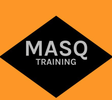RECOVERY PROTOCOLS
Utilize the protocol below to boost your recovery post-training by shifting your body in to a more parasympathetic/relaxed state, So you can train hard again tomorrow!
Utilize the protocol below to boost your recovery post-training by shifting your body in to a more parasympathetic/relaxed state, So you can train hard again tomorrow!
| Breathing Post-Workout Recovery Protocol #1 | |
| File Size: | 28 kb |
| File Type: | |
| Breathing Post-Workout Recovery Protocol #2 | |
| File Size: | 29 kb |
| File Type: | |
| Mobility Recovery Protocol #1 | |
| File Size: | 52 kb |
| File Type: | |
Improve Recovery by Understanding the Nervous System
By: Regan Quaal
Nervous System Basics
The Nervous System consists of three major parts: the central, peripheral, and autonomic nervous system. The part that is most important to athletes is the Autonomic Nervous System (ANS), which regulates many body processes like heart rate. The ANS has two main divisions: the parasympathetic nervous system and the sympathetic nervous system.
The Parasympathetic Nervous System (PNS), known as the “flight response”, it’s responsible for down-regulating our bodies to promote relaxation and recovery.
The Sympathetic Nervous System (SNS), known as the “fight response”, responds by stimulating the body to prepare for stressful/intense situations.
Why Does This Matter?To maximize training, you need to take advantage of the effects of both the parts, specifically the PNS for longevity and recovery.
The PNS is the state we want to be in the majority of our lives because of its relaxation effect. It allows for more efficient recovery due to the increased absorption of nutrients and lower stress levels. Engaging the parasympathetic nervous system can also be very beneficial in your daily training routine, particularly after competitions and training to promote faster recovery.
By: Regan Quaal
Nervous System Basics
The Nervous System consists of three major parts: the central, peripheral, and autonomic nervous system. The part that is most important to athletes is the Autonomic Nervous System (ANS), which regulates many body processes like heart rate. The ANS has two main divisions: the parasympathetic nervous system and the sympathetic nervous system.
The Parasympathetic Nervous System (PNS), known as the “flight response”, it’s responsible for down-regulating our bodies to promote relaxation and recovery.
The Sympathetic Nervous System (SNS), known as the “fight response”, responds by stimulating the body to prepare for stressful/intense situations.
Why Does This Matter?To maximize training, you need to take advantage of the effects of both the parts, specifically the PNS for longevity and recovery.
The PNS is the state we want to be in the majority of our lives because of its relaxation effect. It allows for more efficient recovery due to the increased absorption of nutrients and lower stress levels. Engaging the parasympathetic nervous system can also be very beneficial in your daily training routine, particularly after competitions and training to promote faster recovery.
